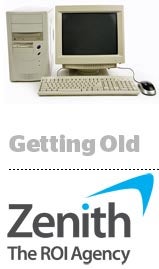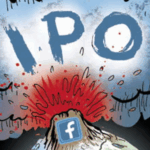 Mobile has been reshaping the way advertisers spend on digital, but the pace is picking up significantly, setting the stage for desktop ad spend to contract even faster than legacy channels.
Mobile has been reshaping the way advertisers spend on digital, but the pace is picking up significantly, setting the stage for desktop ad spend to contract even faster than legacy channels.
As advertisers shift spend to mobile, desktop advertising will shrink faster than newspapers and magazines, according to Zenith’s Advertising Expenditure Forecast, released on Monday. It’s the first time print is predicted to outspend a digital medium, said Jonathan Barnard, head of forecasting at Zenith.
“Mobile advertising is growing even faster than we’ve predicted,” he said. “It’s leading to one of the most rapid changes and shifts in advertising spend allocation we’ve seen.”
Favorable market conditions led Zenith to raise its forecasts across the board. Overall global ad spend is expected to reach $539 billion this year, for example, a 4.4% increase over 2015 and a bit higher than Zenith’s 4.1% growth forecast from June. Zenith also raised its growth projections for 2017 and 2018 to 4.5% and 4.6%, respectively.
Zenith now predicts mobile will spike 48% this year to $81.3 billion, slightly higher than its previous forecast. Zenith also boosted its 2017 forecast for mobile growth to 33%, up from its June prediction of 29%.
As mobile gains, desktop will decline an estimated 0.8% this year, by 2.9% in 2017 and 7.4% in 2018. By then, mobile will top desktop ad spend by $8 billion, adjusted from Zenith’s $2 billion forecast in June.
“Mobile has become much more entrenched in consumers’ lives than desktop ever was,” Barnard said.
But it will be a while before advertisers pivot away from desktop completely.
“There’s a way to go before we reach a balance between mobile and desktop access,” Barnard said.
Display Climbs
Zenith predicts display advertising will grow by 15% annually through 2018, driven by video and social. Both channels will enjoy double-digit gains, with video ad spend increasing 20% annually and social soaring 27%. Display buys will be primarily placed programmatically through private marketplace deals.
“The spread of programmatic tech from remnant inventory and banner advertising to all forms of display is opening up display to the kind of efficiency and targeting that programmatic buying allows,” Barnard said. “Private deals are becoming a much more important part of programmatic.”
So Long, Banner
Banner ads, however, may have seen their day. The format is forecast to decline annually by 1.8% through 2018, according to the report.
“The banner ad is … not a particularly effective answer,” Barnard said. “It tends to be off-putting and disruptive to consumers. We may eventually see a complete absence of banner advertising, but it may not be for many years to come.”
Mobile will also redefine search advertising, as queries become more localized and contextually relevant. Search will grow at an average rate of 13% through 2018.
“Mobile makes the localized searches a lot easier to perform,” Barnard said. “For example, a fast-food chain that keeps track of fulfillment of orders can match location and speed of delivery to tell people where to get their food in the most efficient and rapid way possible.”













